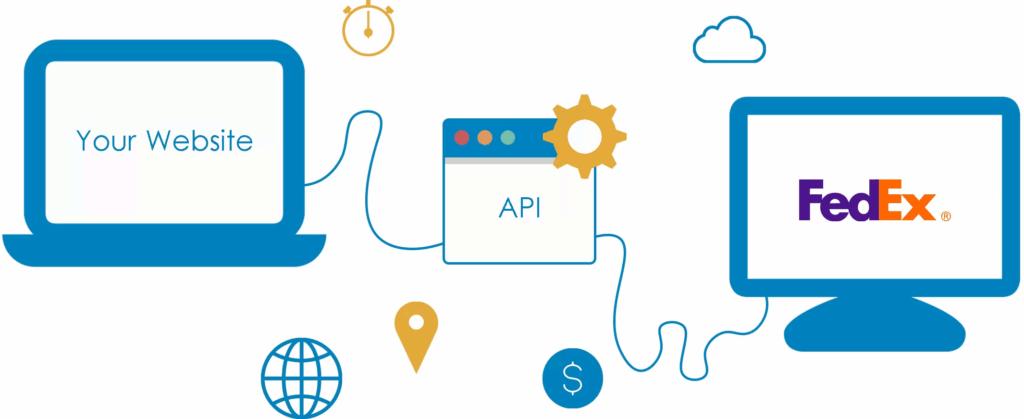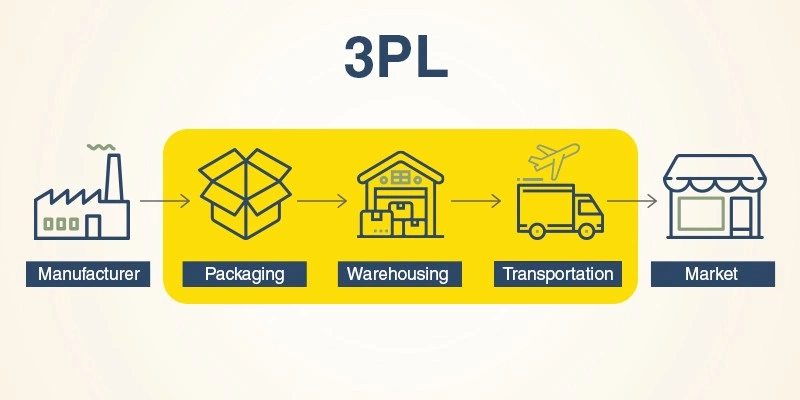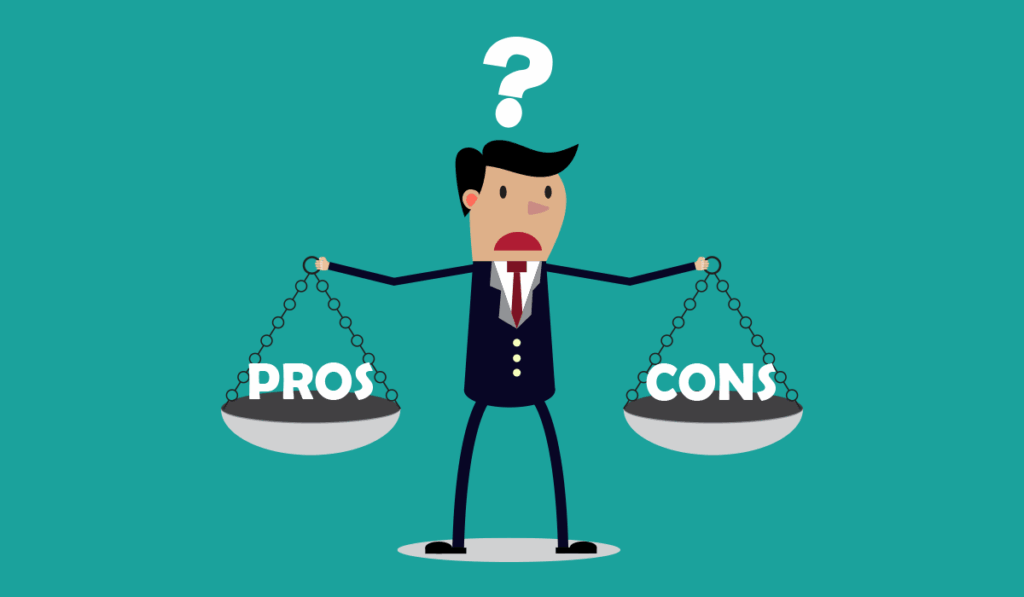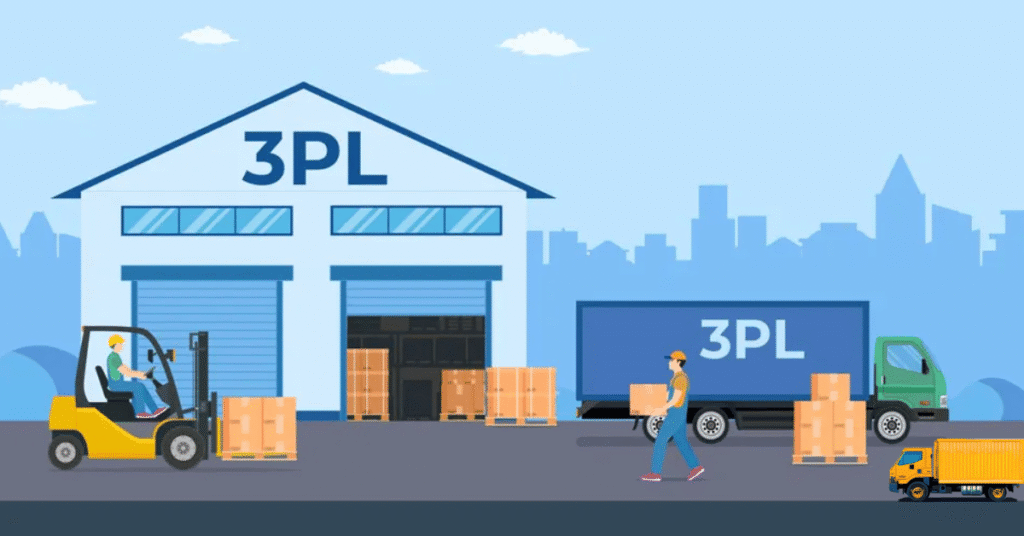E-Commerce-Versandintegration vs. Logistik von Drittanbietern: Was ist der Unterschied?
E-Commerce-Marken stehen oft vor einer wichtigen Entscheidung: Sollen sie sich auf Integration von E-Commerce-Versand oder den Betrieb an einen Drittanbieter von Logistikdienstleistungen (3PL) übergeben? Unter PostpaketViele Händler stellen sich genau diese Frage, weil beide Optionen attraktiv erscheinen, aber sehr unterschiedliche Bedürfnisse erfüllen.
Sowohl die E-Commerce-Versandintegration als auch 3PL zielen darauf ab, die Auftragsabwicklung schneller und zuverlässiger zu machen. Sie unterscheiden sich jedoch in Bezug auf Kosten, Skalierbarkeit und das Maß an Kontrolle, das Sie über die täglichen Abläufe behalten. Es ist wichtig, die Unterschiede zu verstehen, bevor Sie sich für einen Weg entscheiden, denn Ihre Wahl wirkt sich direkt auf die Kundenzufriedenheit und das langfristige Wachstum aus.

Die Integration des E-Commerce-Versands verstehen
Was ist die Integration des E-Commerce-Versands?
Integration von E-Commerce-Versand ist die Verbindung zwischen Ihrem Online-Shop und den Versandunternehmen über Plugins, APIs oder Softwareplattformen. Es automatisiert Aufgaben, mit denen Verkäufer oft zu kämpfen haben, wie z. B. den Druck von Versandetiketten, die Aktualisierung von Kunden mit Tracking-Informationen und die Anzeige von Echtzeit-Versandpreisen an der Kasse.

Betrachten Sie es als eine digitale Brücke zwischen Ihrem Geschäft und Ihren Logistikpartnern. Ohne diese Brücke würden die Mitarbeiter die Bestelldaten manuell in die Systeme der Spediteure übertragen, was die Gefahr von Fehlern erhöht. Mit der Integration fließen die Bestellungen automatisch von Ihrem Geschäft zum Spediteur.
Hauptmerkmale der E-Commerce Versandintegration
- Versandtarife in Echtzeit: Die Kunden sehen sofort die genauen Versandkosten, wodurch die Zahl der durch unerwartete Gebühren verursachten abgebrochenen Warenkörbe verringert wird.
- Automatisierte Etikettenerstellung: Für jede Bestellung werden Etiketten erstellt, wodurch menschliche Fehler minimiert werden.
- Tracking-Benachrichtigungen: Die Kunden erhalten zeitnahe Aktualisierungen ohne zusätzlichen manuellen Aufwand.
- Multi-Carrier-Optionen: Verkäufer können sich mit mehrere Befördererdie Wahl des schnellsten oder günstigsten Zustelldienstes.
- Zentrales Dashboard: Bestellungen, Sendungen und Retouren können über eine einzige Schnittstelle verwaltet werden.
Vorteile für kleine und mittelgroße Läden
Die Integration des E-Commerce-Versands ist oft die effizienteste Option für kleinere Marken, die direkt von ihrem eigenen Lagerraum aus versenden. Sie ermöglicht es ihnen, den Betrieb zu skalieren, ohne zusätzliches Personal einzustellen. Darüber hinaus stärkt die Integration die Professionalität, da die Kunden Einblick in die Versandaktualisierungen erhalten, was Vertrauen schafft.
Die Logistik von Drittanbietern (3PL) verstehen
Was ist Drittanbieter-Logistik?
Protokoll eines Drittenistics bedeutet die Auslagerung der Auftragsabwicklung an ein externes Unternehmen. Ein 3PL verwaltet die Lagerhaltung, die Auftragskommissionierung, die Verpackung, den Versand und manchmal auch die Retouren. Einzelhändler, die 3PLs nutzen, liefern in der Regel große Mengen an das Lager des Anbieters. Von dort aus bearbeitet das 3PL-Team jede Bestellung, die eingeht.

Kernfunktionen eines 3PL-Anbieters
- Lagerhaltung und Lagerung: Das Inventar sicher und organisiert aufbewahren.
- Auftragsabwicklung: Kommissionieren und Verpacken der Artikel entsprechend den Kundenbestellungen.
- Träger-Management: Partnerschaften mit mehreren Versandunternehmen für bessere Preise.
- Handhabung von Rücksendungen: Verwaltung von Produktrücksendungen und Rückerstattungen.
- Skalierbarkeit: Ausweitung des Betriebs, um saisonalen Spitzen oder internationaler Nachfrage gerecht zu werden.
Vorteile für größere Verkäufer
Ein 3PL eignet sich oft für Unternehmen, die über den Punkt hinausgewachsen sind, die Logistik intern zu verwalten. Indem sie den Betrieb an Experten übergeben, können sich Einzelhändler auf den Verkauf, die Produktentwicklung und das Marketing konzentrieren. Für Unternehmen, die grenzüberschreitend expandieren, kann das globale Lagernetzwerk eines 3PL die Lieferzeiten erheblich verkürzen.
E-Commerce-Versandintegration vs. Logistik von Drittanbietern
Kontrolle über Operationen
- Integration von E-Commerce-Versand: Die Händler behalten die volle Kontrolle darüber, wie die Produkte gelagert, verpackt und versandt werden. Sie können die Verpackung individuell gestalten und engen Kontakt zu den Kunden halten.
- 3PL: Ein gewisses Maß an Kontrolle geht verloren, weil das Fulfillment ausgelagert wird. Der Prozess ist zwar professionell, berücksichtigt aber möglicherweise nicht die markenspezifischen Präferenzen, wie z. B. einzigartige Verpackungsdesigns.
Kostenstruktur

- Integration von E-Commerce-Versand: In der Regel günstiger für kleine und mittlere Unternehmen. Die Kosten beschränken sich in der Regel auf die Software-Gebühren und die Versandgebühren der Transportunternehmen.
- 3PL: Beinhaltet Gebühren für Lagerung, Arbeit, Verpackung und zusätzliche Dienstleistungen. Bei geringeren Auftragsvolumina können die Kosten hoch sein, aber bei größeren Volumina kann die 3PL-Preisgestaltung effizienter werden.
Geschwindigkeit und Effizienz
- Integration von E-Commerce-Versand: Funktioniert am besten, wenn Sie über internes Personal und Lagerraum verfügen. Die Automatisierung reduziert die manuellen Aufgaben, aber die Liefergeschwindigkeit hängt von den von Ihnen gewählten Transportunternehmen ab.
- 3PL: Schnellere Lieferung in vielen Fällen, da 3PLs mehrere Lager in Kundennähe haben. Dies verkürzt die Transitzeiten und ermöglicht eine Lieferung am nächsten Tag.
Skalierbarkeit
- Integration von E-Commerce-Versand: Begrenzt durch die Kapazität Ihres eigenen Lagers und Ihres Personals. Wachstum erfordert mehr Personal und Platz.
- 3PL: Auf Skalierbarkeit ausgelegt. Anbieter können bei saisonalen Schwankungen, Blitzverkäufen oder globaler Expansion schnell Ressourcen hinzufügen.
Kundenerfahrung
- Integration von E-Commerce-Versand: Bietet den Kunden Echtzeit-Sichtbarkeit in den Versand, aber die Servicequalität hängt von Ihren internen Prozessen ab.
- 3PL: Bietet eine professionelle Logistik, auch wenn es schwieriger sein kann, eine sehr persönliche Note bei der Verpackung oder der Kommunikation zu erhalten.
Pro und Kontra

E-Commerce Versand Integration Profis
- Geringere Betriebskosten für kleinere Geschäfte, wodurch es einfacher wird, die Rentabilität zu erhalten und gleichzeitig stetig zu wachsen.
- Größere Kontrolle über die Markenpräsentation, einschließlich des Verpackungsstils, der Kundenkommunikation und des gesamten Einkaufserlebnisses.
- Einfache Implementierung mit modernen E-Commerce-Plattformen, die nur minimale Einrichtungszeit und technisches Know-how erfordern.
- Echtzeit-Automatisierung für Genauigkeit und Komfort, die weniger Fehler und eine schnellere Versandbestätigung gewährleistet.
E-Commerce Versand Integration Nachteile
- Eigenes Lager und Personal erforderlich
- Das Wachstum kann durch Platz und Ressourcen begrenzt sein
- Die Verantwortung für Fehler bleibt beim Einzelhändler
Logistik-Profis von Drittanbietern
- Kompletter Service von der Lagerung bis zum Versand

- Einfache Skalierung bei Wachstum oder saisonaler Nachfrage
- Professionelle Abwicklung mit logistischer Kompetenz
- Freisetzung von Zeit für Einzelhändler sich auf den Verkauf zu konzentrieren
Logistik für Dritte Nachteile
- Höhere Kosten für kleinere Betriebe
- Weniger Flexibilität bei Verpackung und Branding
- Mögliche Diskrepanz zur Markenidentität
Welche sollten Sie wählen?
Die Wahl zwischen Integration von E-Commerce-Versand und 3PL hängt von der Phase Ihres Unternehmens ab.
Wählen Sie Ecommerce Versand Integration wenn:
- Ihr Geschäft ist klein oder mittelgroß und hat ein überschaubares Volumen.
- Sie möchten jeden Aspekt der Verpackung und des Markenauftritts kontrollieren.
- Budgeteffizienz ist wichtiger als die Auslagerung der Logistik.
Wählen Sie Third-Party Logistics, wenn:
- Ihr Unternehmen skaliert schnell und bearbeitet täglich Hunderte von Aufträgen.
- Sie wollen internationale Kunden schnell erreichen.

- Sie ziehen es vor, Ihre Ressourcen für den Vertrieb einzusetzen und die Logistik Experten zu überlassen.
In vielen Fällen verwenden Unternehmen einen hybriden Ansatz. Sie verlassen sich auf Ecommerce Shipping Integration für inländische Lieferungen und nutzen 3PL-Dienste für die globale Expansion. Diese Kombination bietet sowohl Kontrolle als auch Skalierbarkeit.
Schlussfolgerung
Integration von E-Commerce-Versand legt den Schwerpunkt auf Automatisierung und Kosteneinsparungen, während die Logistik von Drittanbietern Skalierbarkeit und professionelles Logistikmanagement bietet. Keine der beiden Optionen ist pauschal besser - die richtige Wahl hängt von Ihren Zielen, Ressourcen und Wachstumsplänen ab.
Indem sie Kosten, Kontrolle, Geschwindigkeit und Skalierbarkeit sorgfältig abwägen, können Unternehmen den richtigen Weg für ihre Versandstrategie finden. Für Verkäufer, die einen zuverlässigen Partner suchen, um beide Ansätze zu vereinen, Postpaket bietet flexible Lösungen, die Integration und Logistikunterstützung vereinen und einen reibungslosen Betrieb für E-Commerce-Unternehmen jeder Größe gewährleisten.
Einblicke in die Industrie
Nachrichten über den Posteingang
Nulla turp dis cursus. Integer liberos euismod pretium faucibua







